The document discusses object-oriented programming (OOP) using C++, outlining its history, key concepts, and features. It covers C++ syntax, data types, structures, classes, constructors, destructors, and access specifiers, while emphasizing encapsulation, inheritance, and function overloading. The lecture serves as an introduction to the fundamentals of OOP and practical implementation through C++ examples.
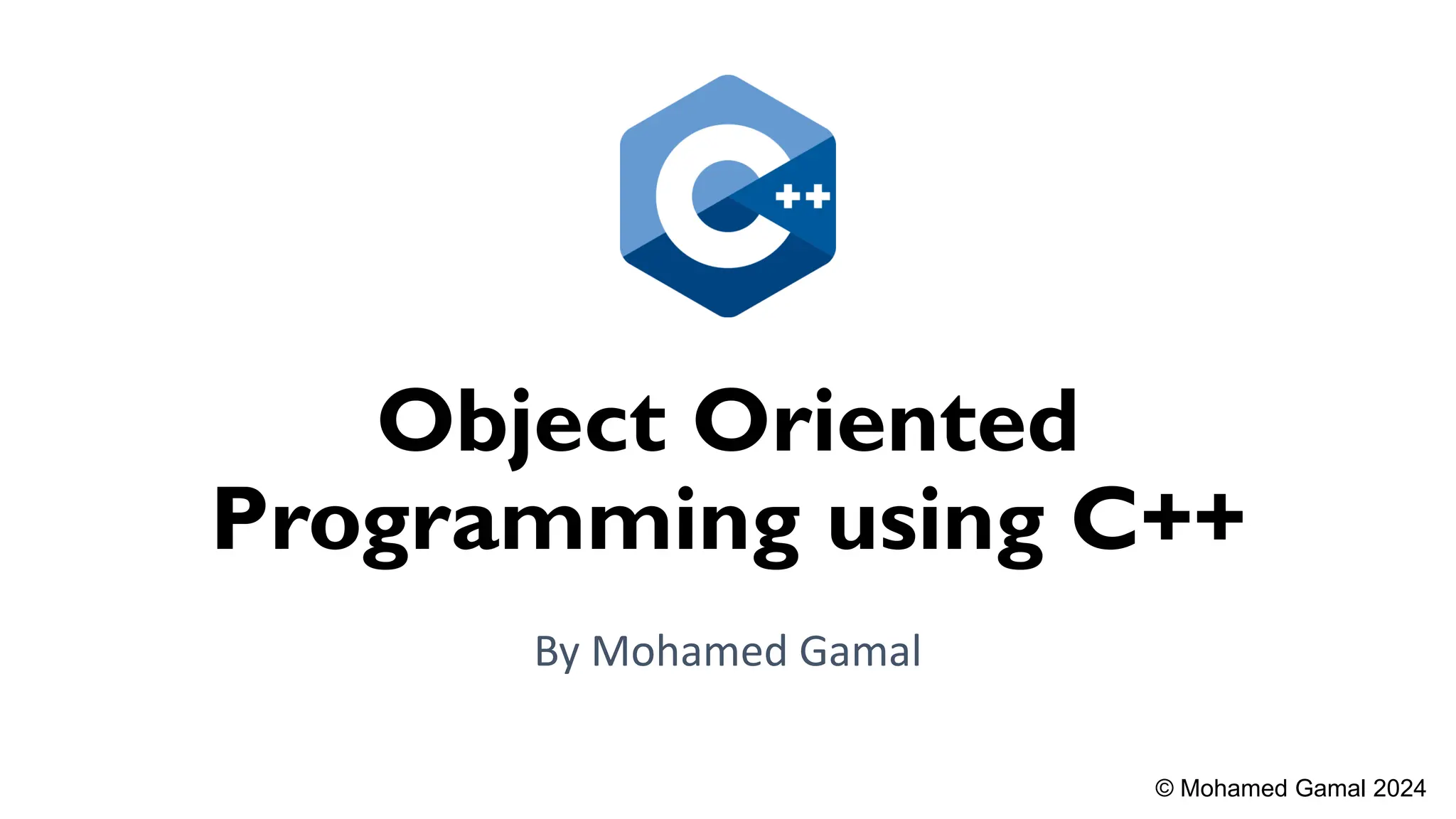
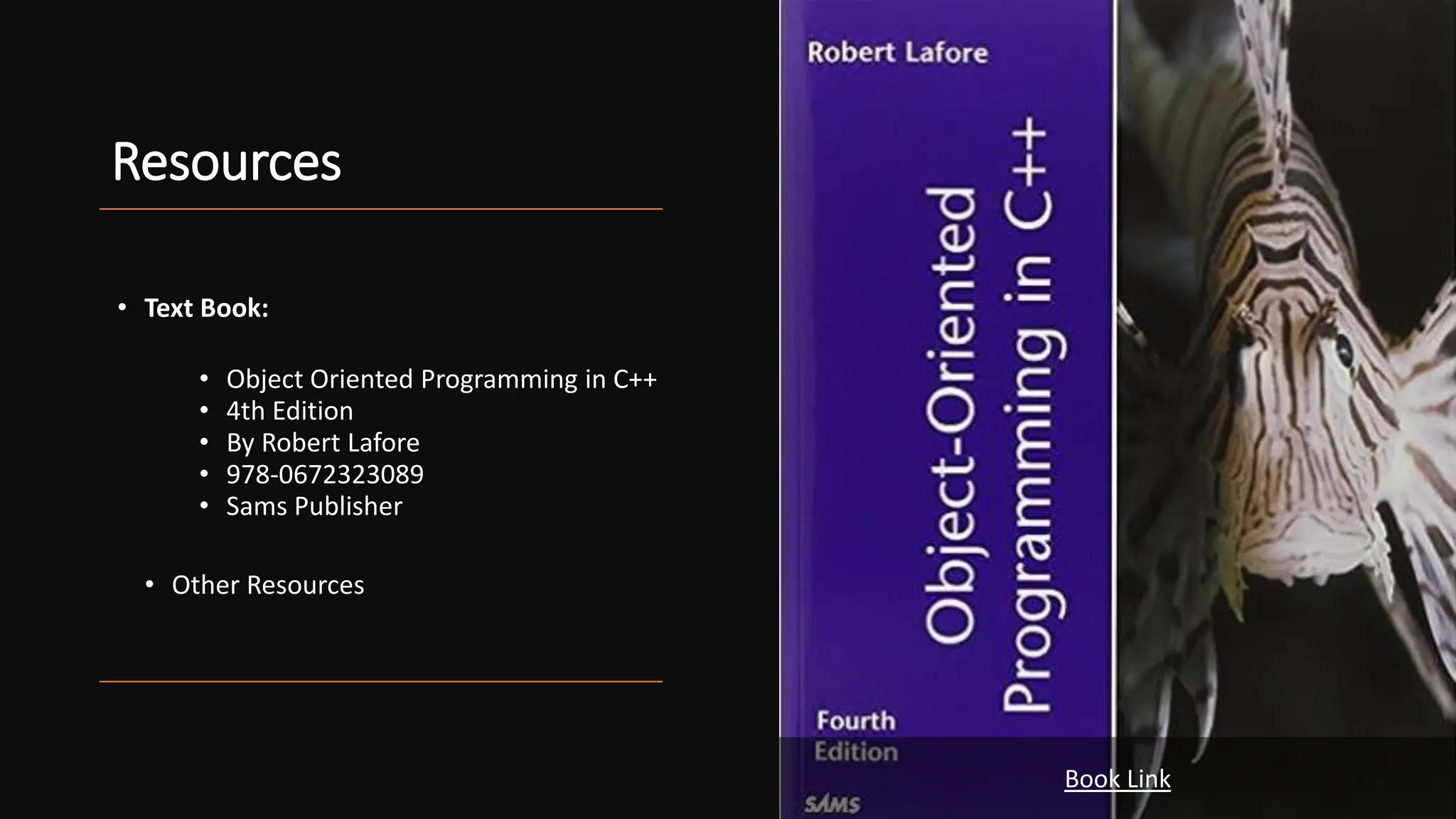

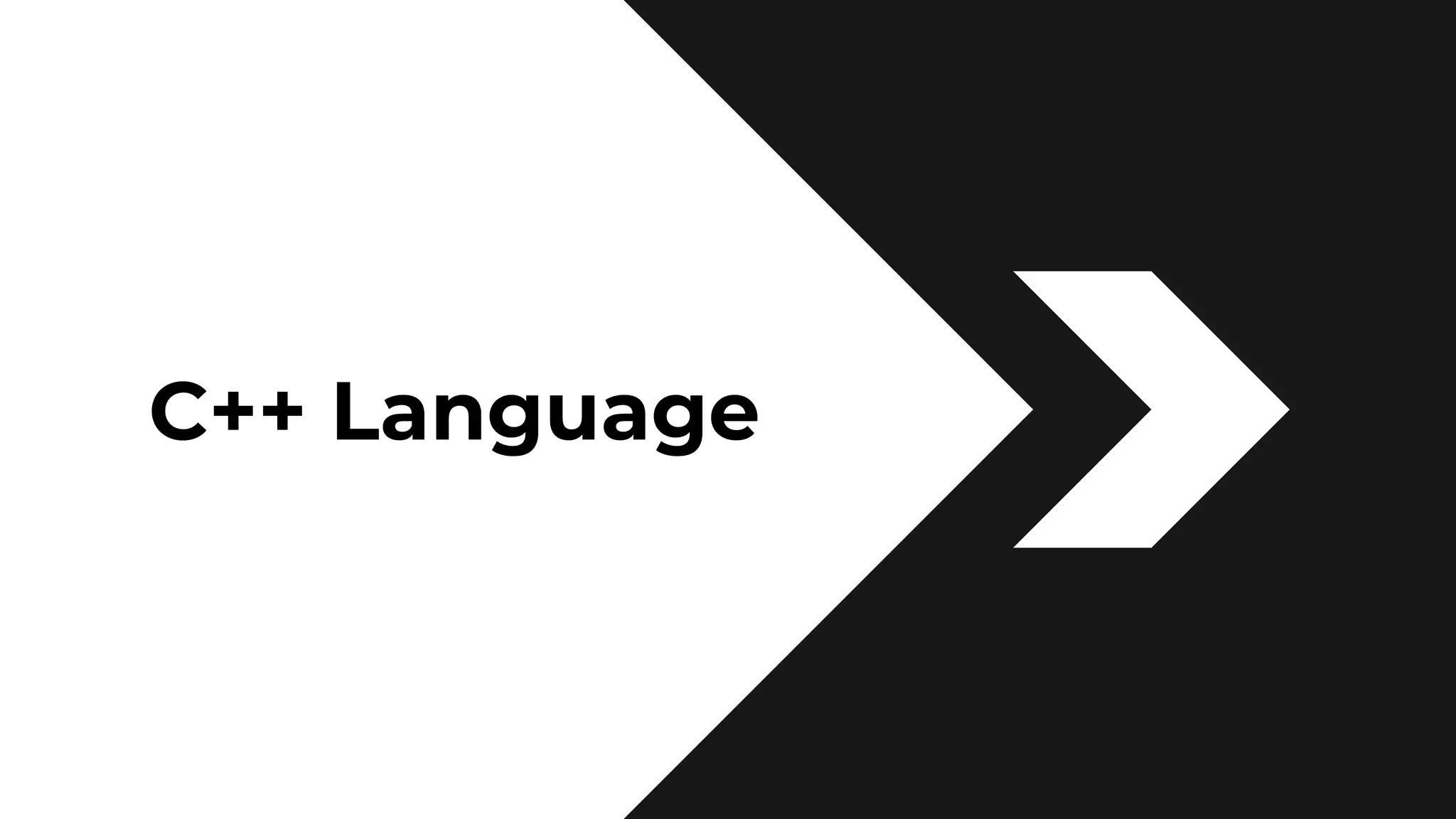
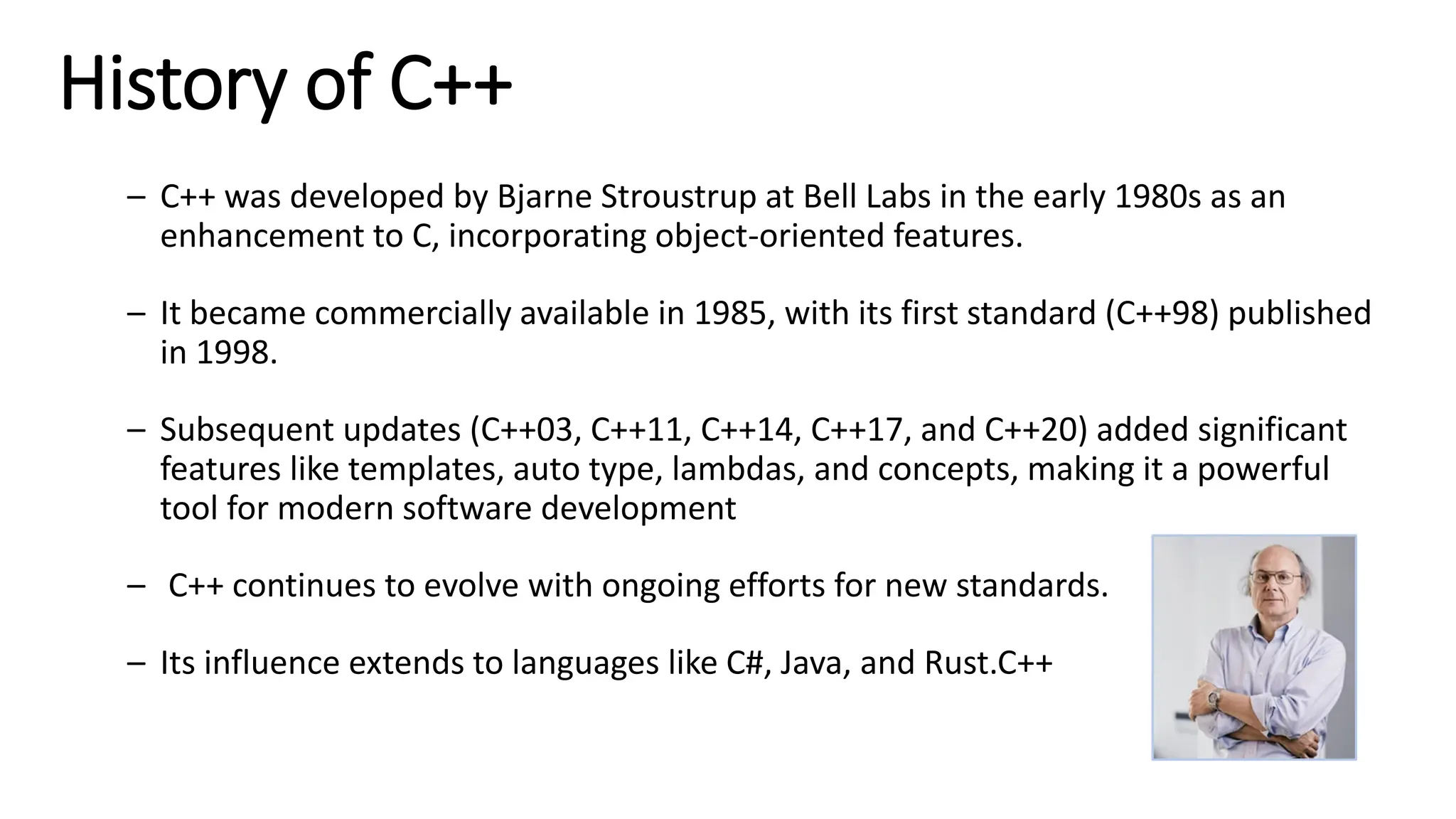



![#include <iostream> using namespace std; int main() { const int MAX = 20; //max characters in string char str[MAX]; //string variable str cout << "nEnter a string : "; // cin >> setw(MAX) >> str; // space problem cin.get(str, MAX); //put string in str (max 19 chars) // no more than MAX chars cout << "You entered: " << str; cout << ", size: " << sizeof(str); cout << endl; return 0; } Arrays – An array is a collection of variables of the same types.](https://image.slidesharecdn.com/oopusingclanguage-lecture1-240918193533-6e03ba0e/75/Object-Oriented-Programming-OOP-using-C-Lecture-1-9-2048.jpg)
![#include <iostream> using namespace std; const int MAX = 2000; //max characters in string char str[MAX]; //string variable str int main() { cout << "nEnter a string : n"; cin.get(str, MAX, '$'); //terminate with $ cout << "You entered : n" << str << endl; return 0; } Reading Multiple Lines](https://image.slidesharecdn.com/oopusingclanguage-lecture1-240918193533-6e03ba0e/75/Object-Oriented-Programming-OOP-using-C-Lecture-1-10-2048.jpg)
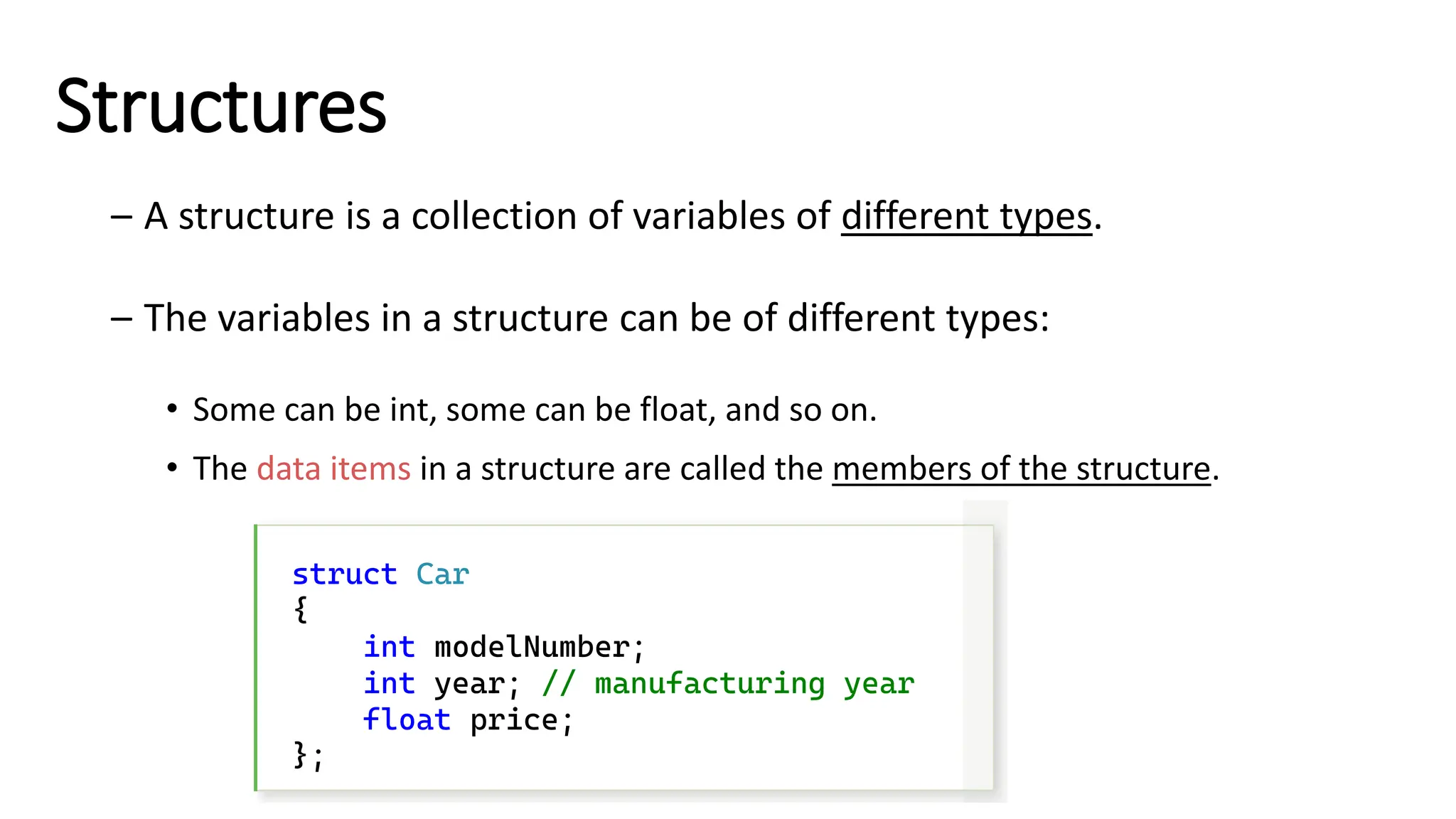
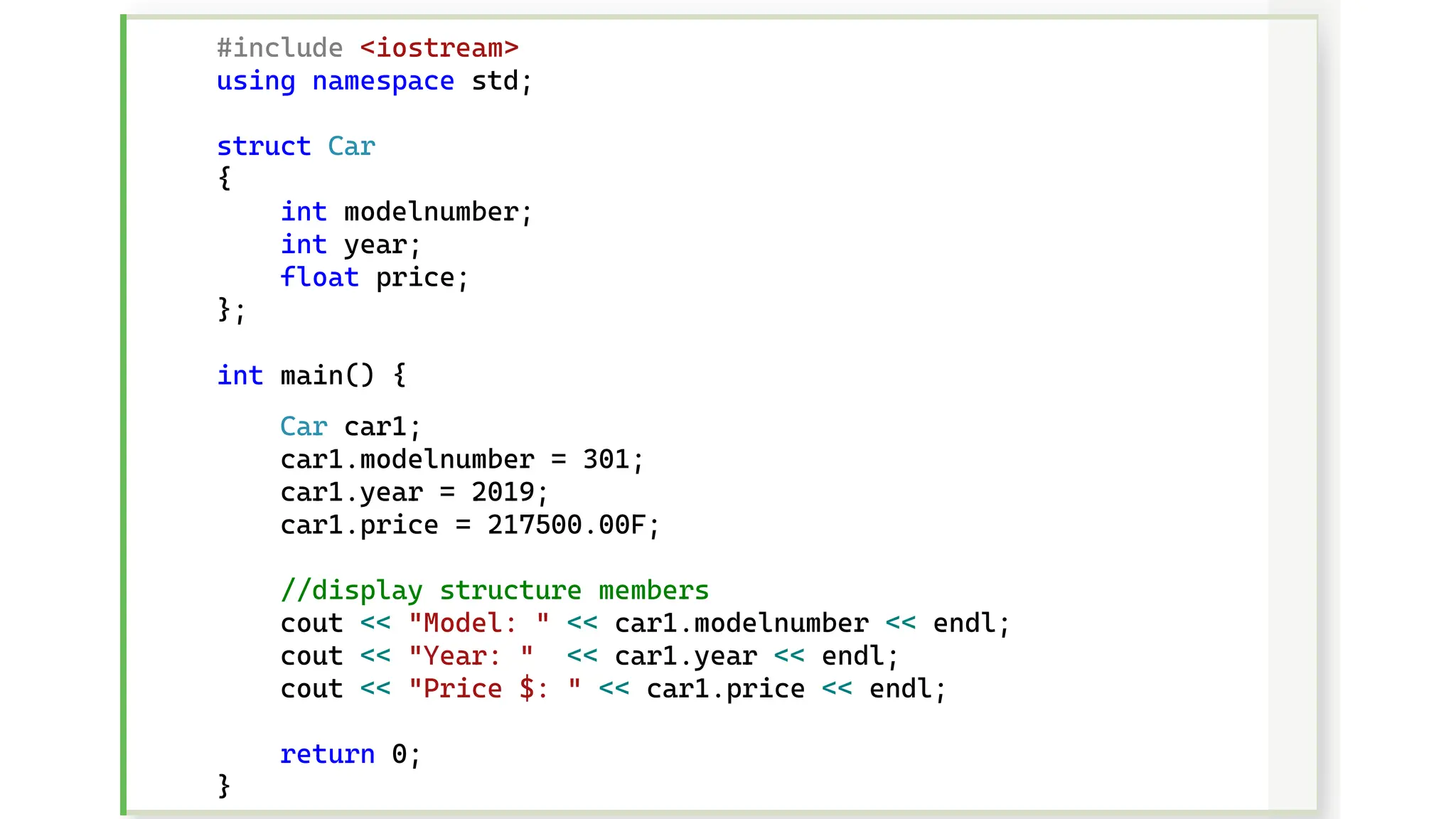
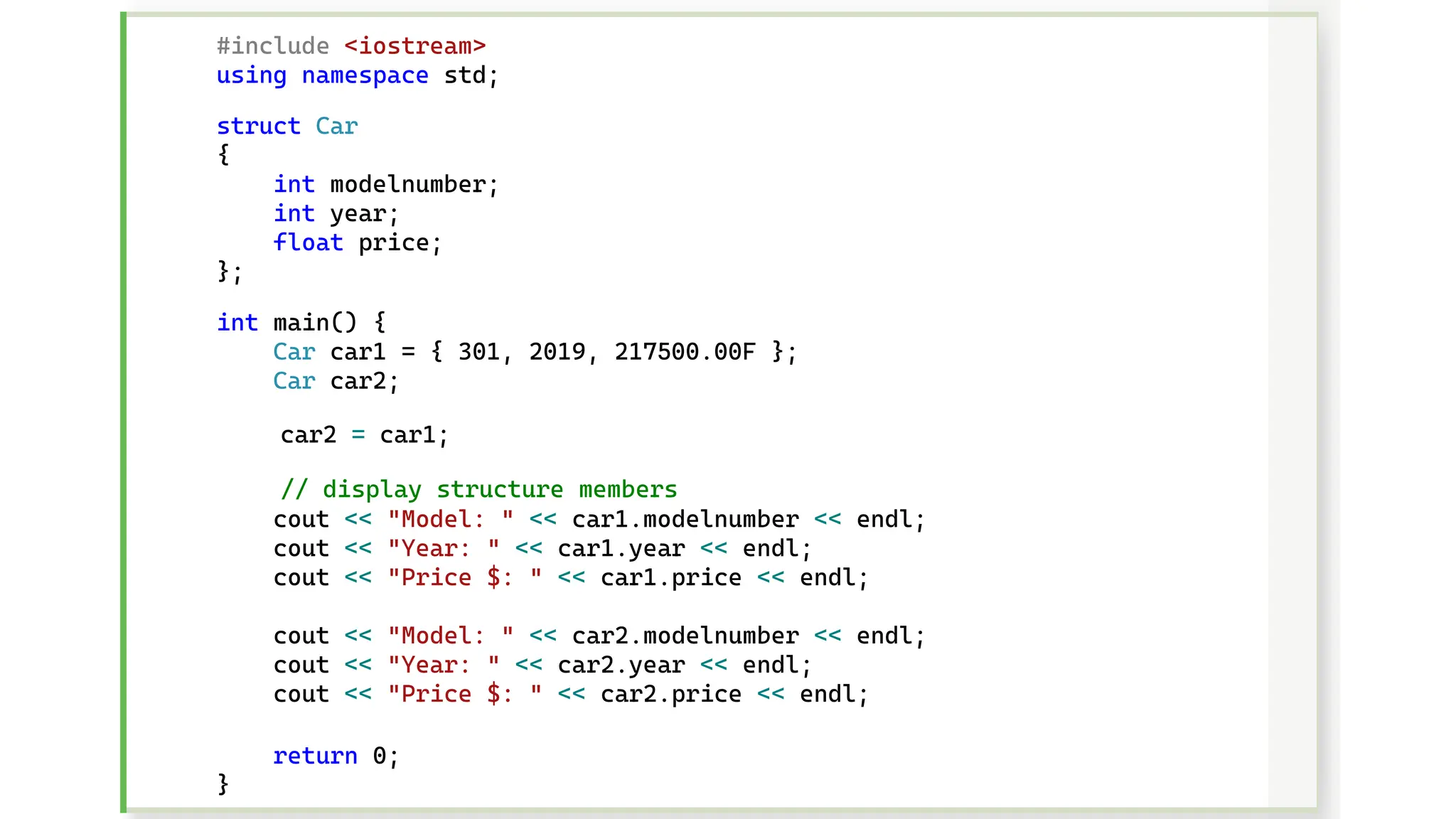
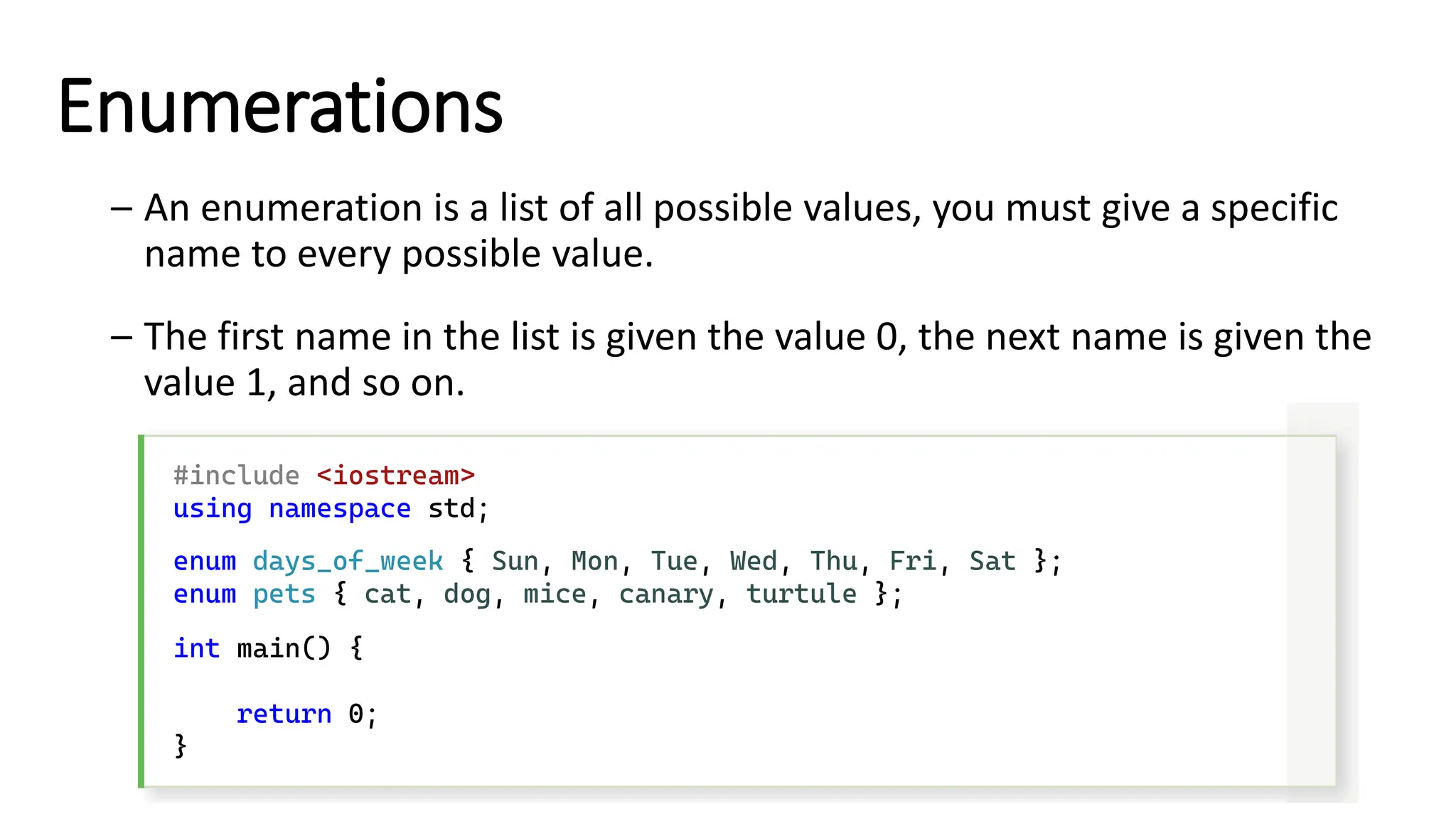





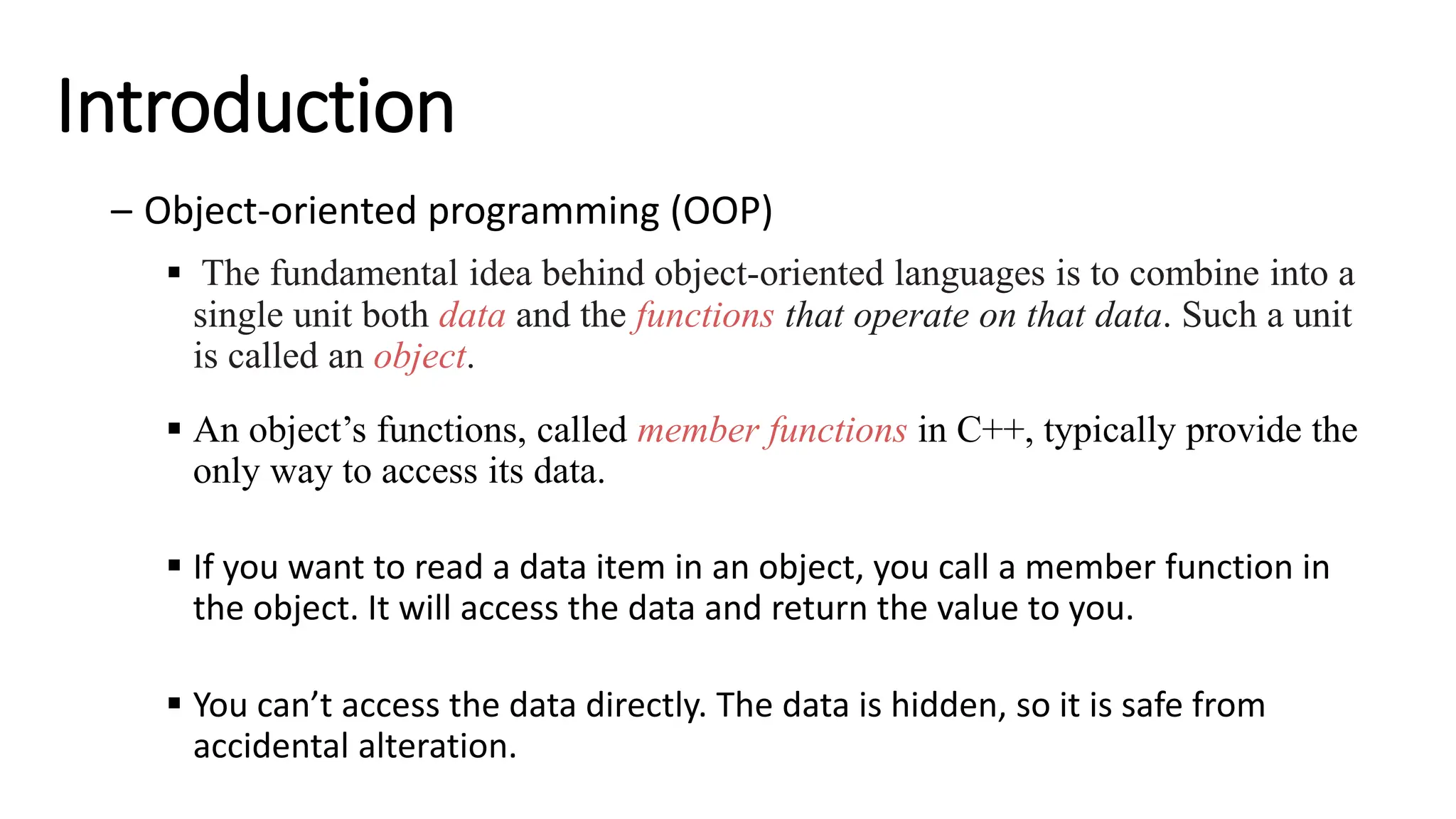

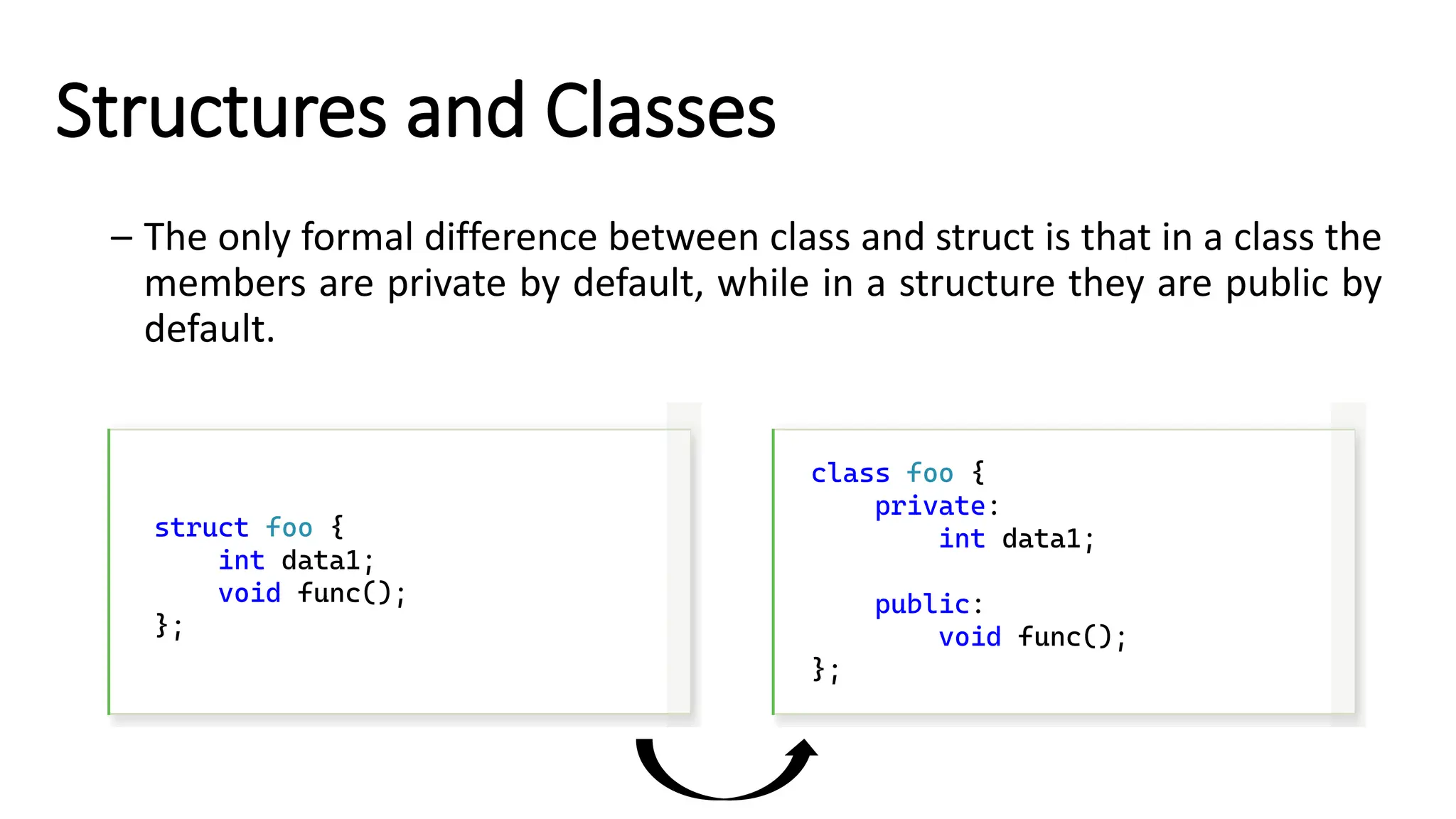
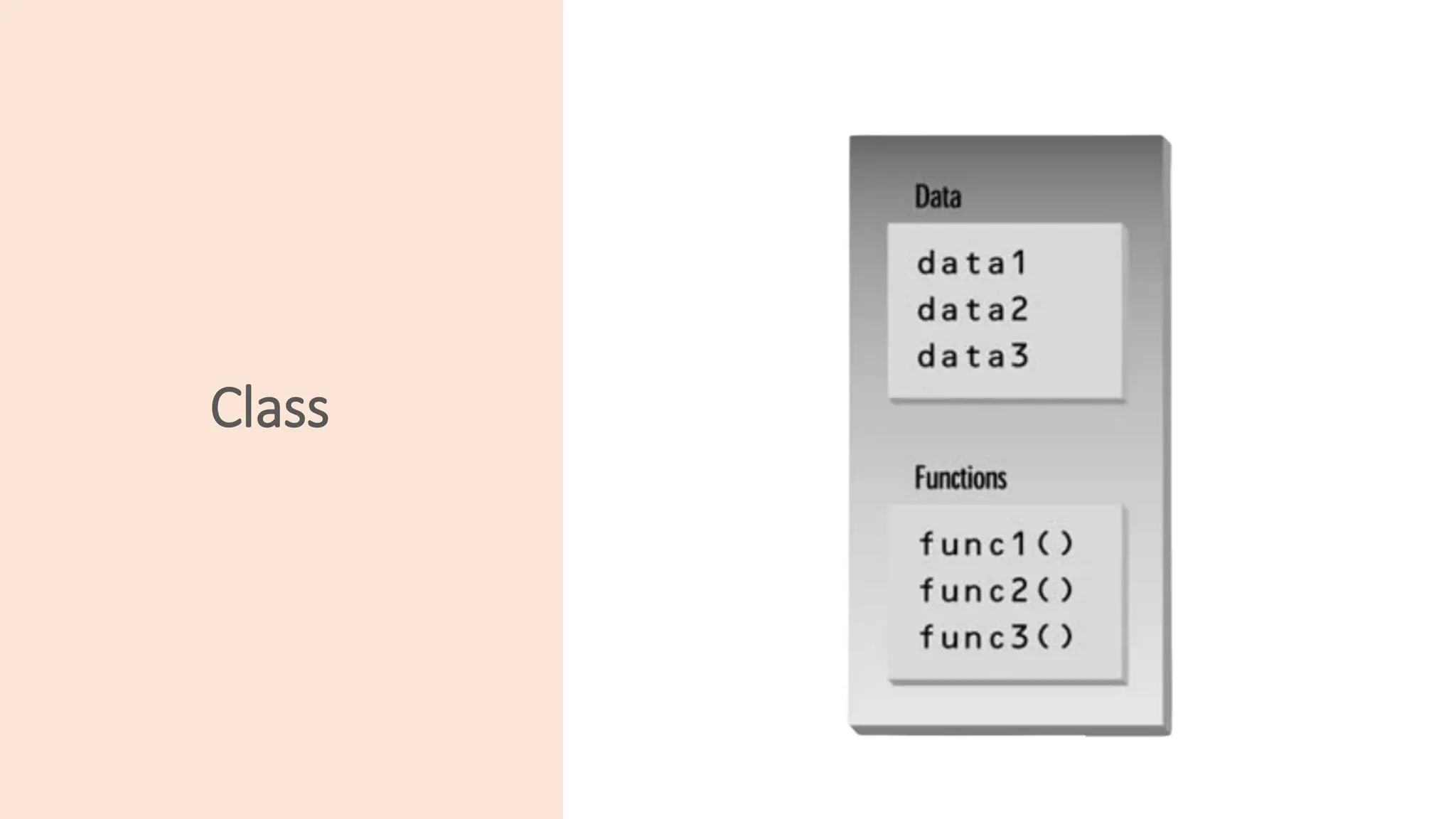

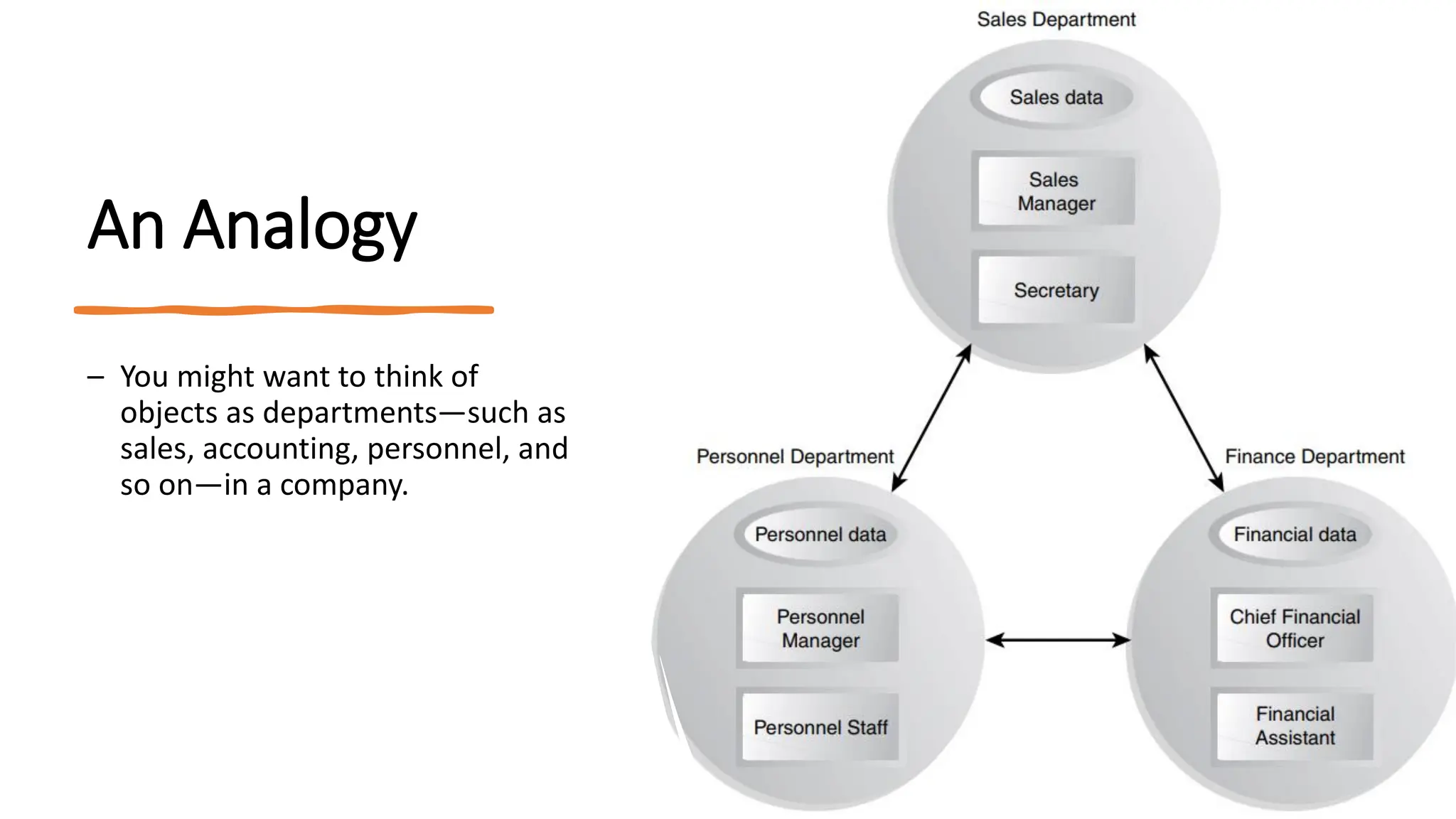

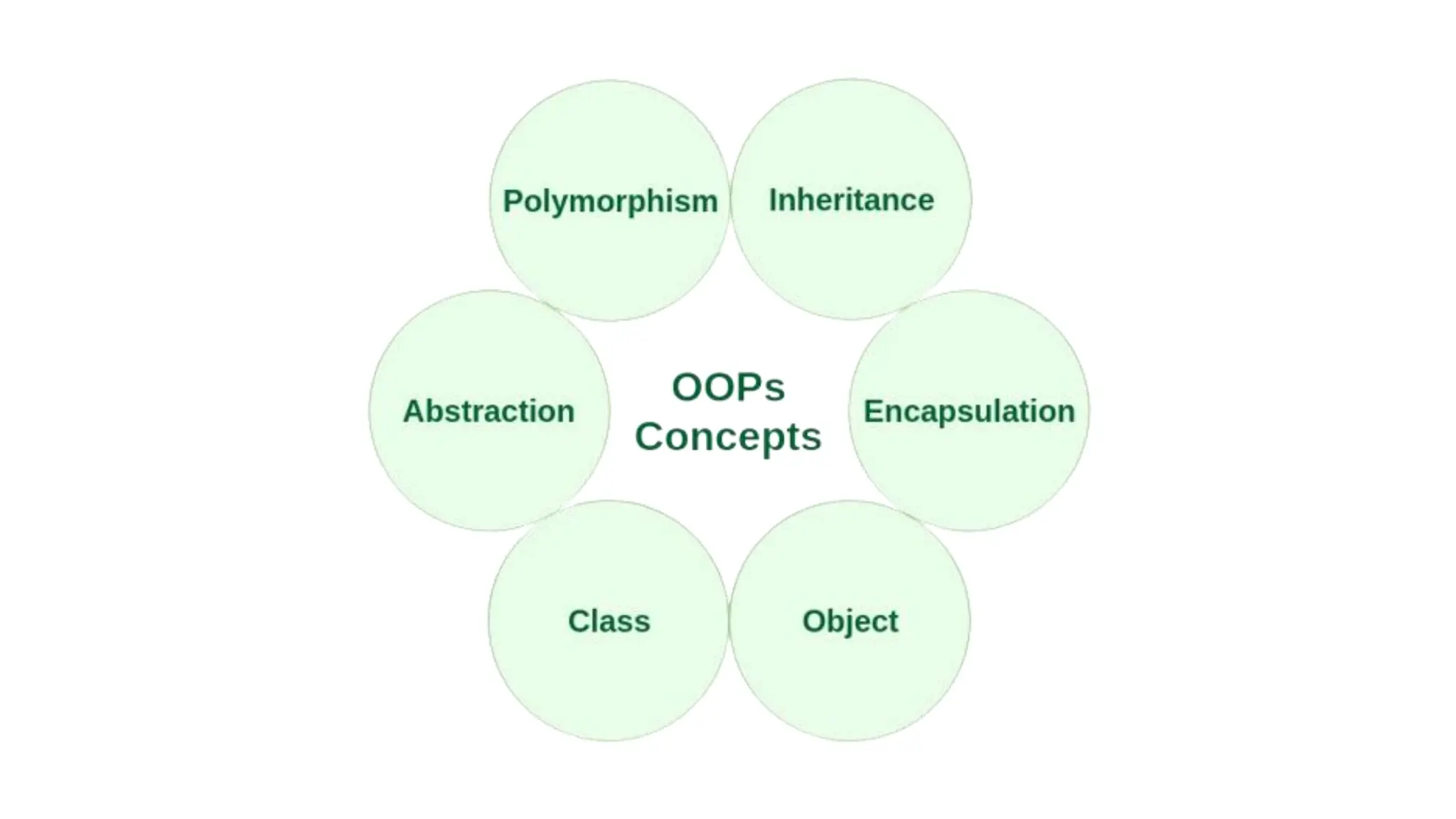
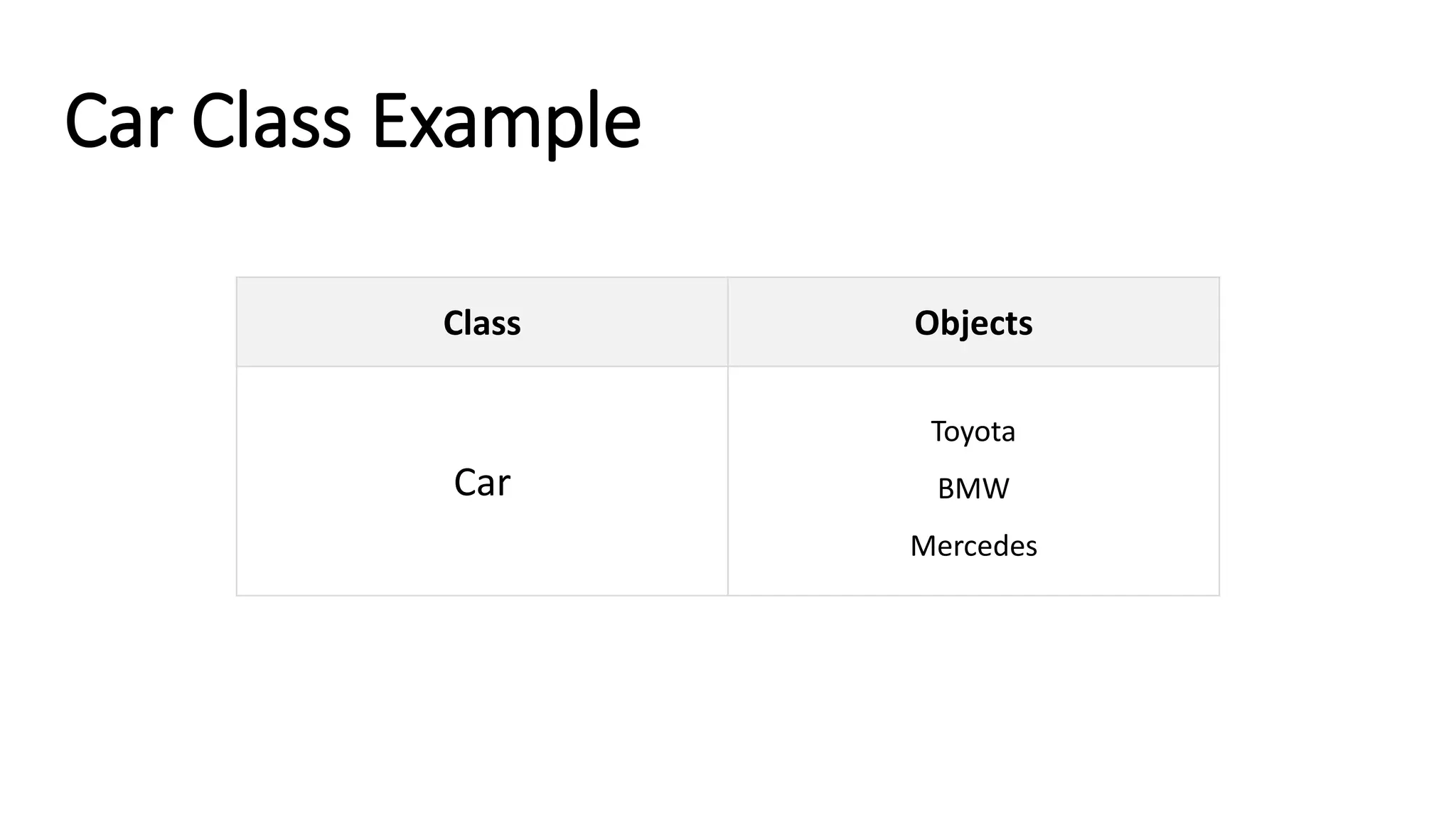
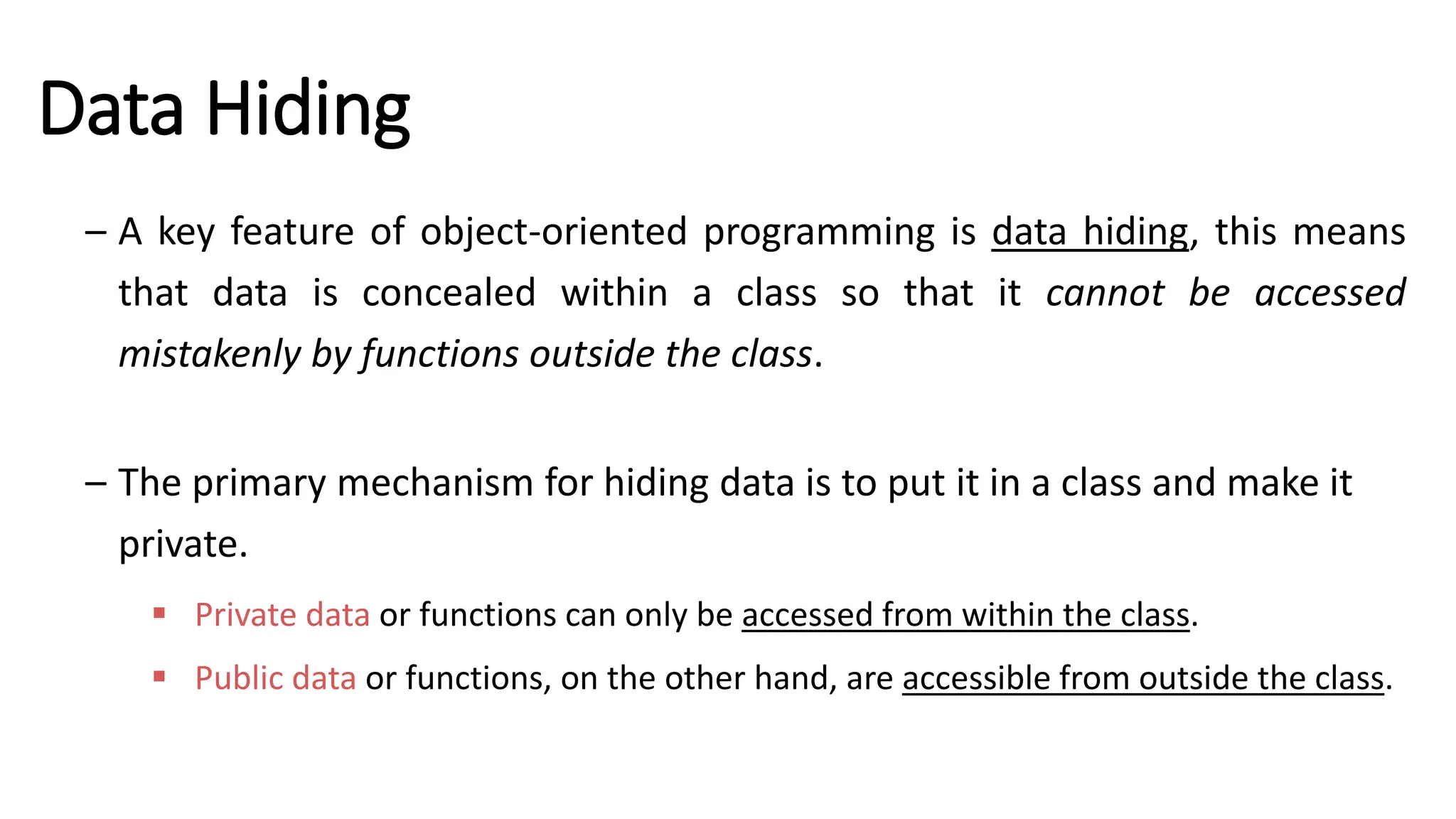

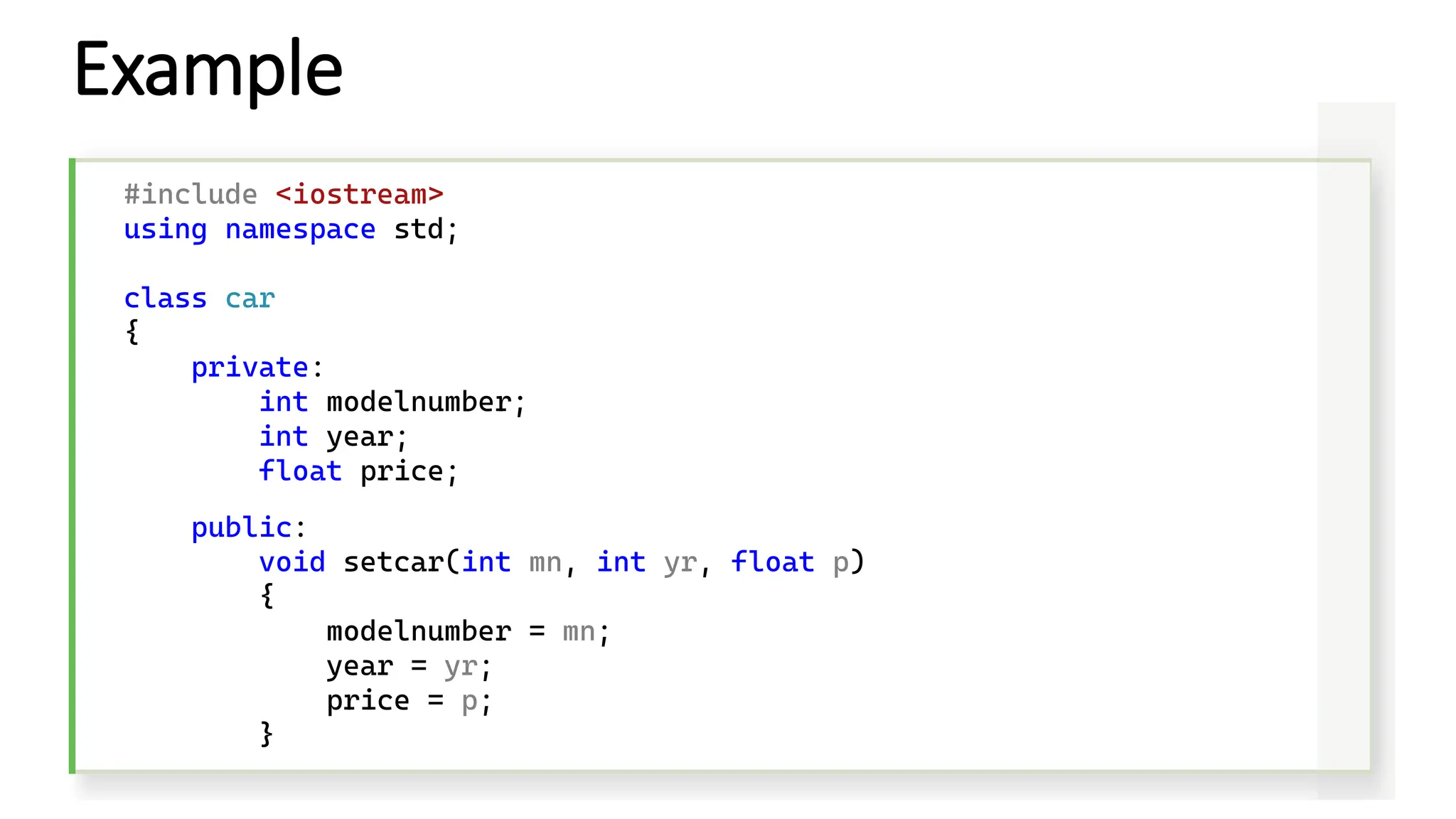


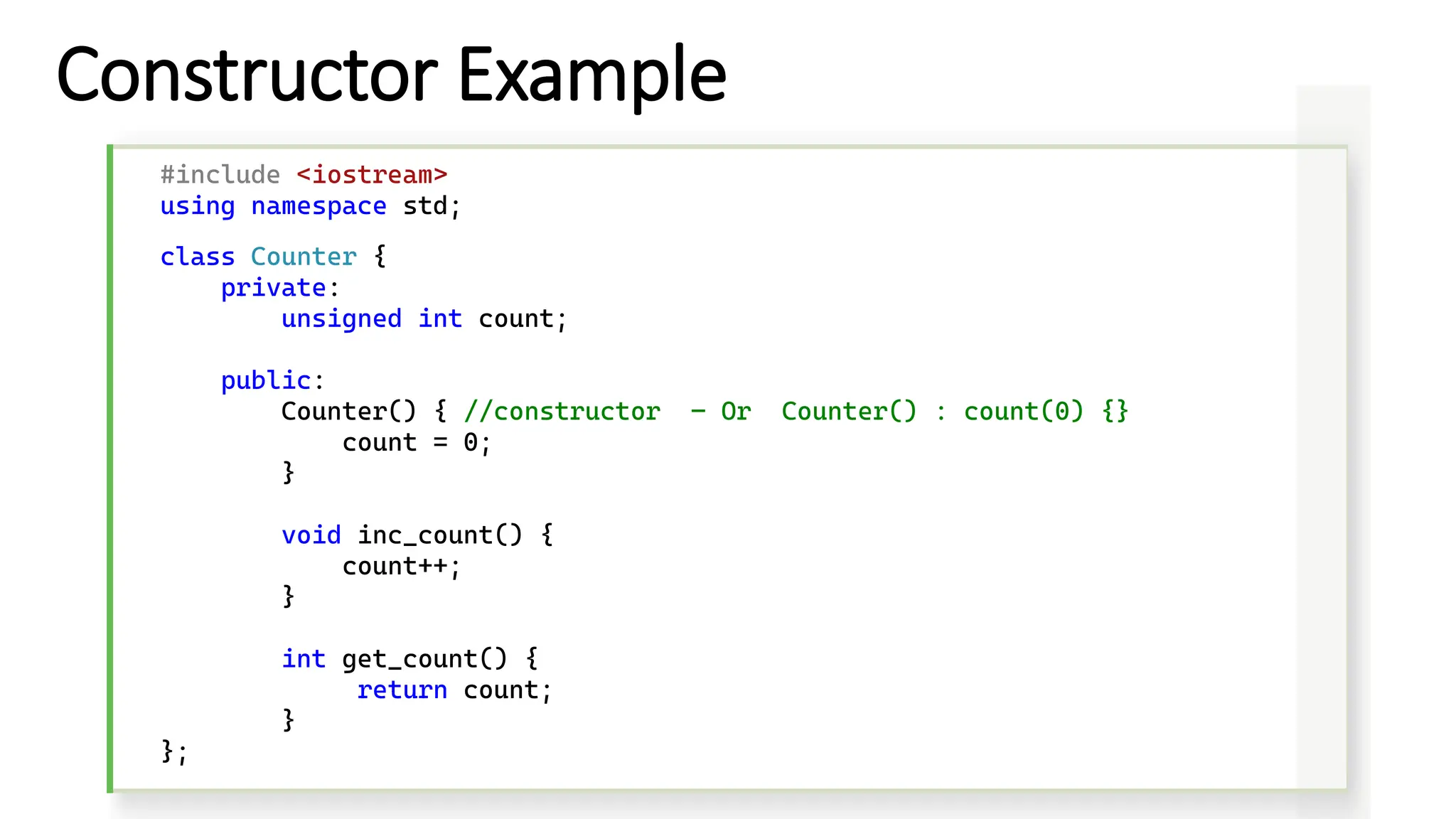
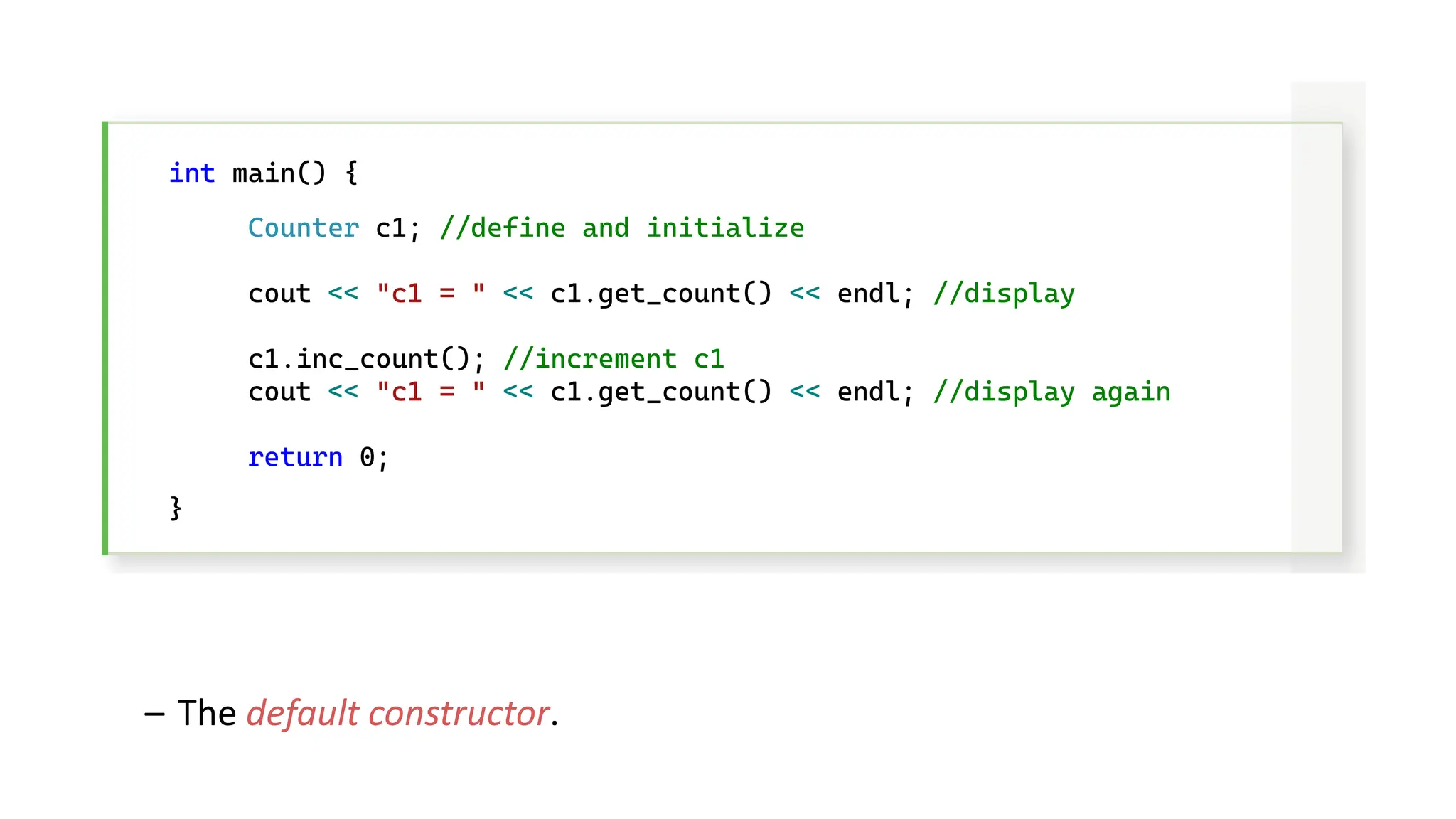


![Overloaded Constructors #include <iostream> #include <string.h> using namespace std; class Person { private: char name[80]; char gender[7]; int age; public: Person() { strcpy(name, "Mohamed"); strcpy(gender, "Male"); age = 25; } Person(char _name[]) { strcpy(name, _name); strcpy(gender, "Male"); age = 25; }](https://image.slidesharecdn.com/oopusingclanguage-lecture1-240918193533-6e03ba0e/75/Object-Oriented-Programming-OOP-using-C-Lecture-1-38-2048.jpg)
![Person(char _name[], char _gender[]) { strcpy(name, _name); strcpy(gender, _gender); age = 25; } Person(char _name[], char _gender[], int _age) { strcpy(name, _name); strcpy(gender, _gender); age = _age; } ~Person() { cout << "Destructor executed." << endl; } void print() { cout << "Name: " << name << endl; cout << "Gender: " << gender << endl; cout << "Age: " << age << endl; } }; int main() { Person p1, p2("Hassan", "Male", 32); p1.print(); p2.print(); return 0; }](https://image.slidesharecdn.com/oopusingclanguage-lecture1-240918193533-6e03ba0e/75/Object-Oriented-Programming-OOP-using-C-Lecture-1-39-2048.jpg)

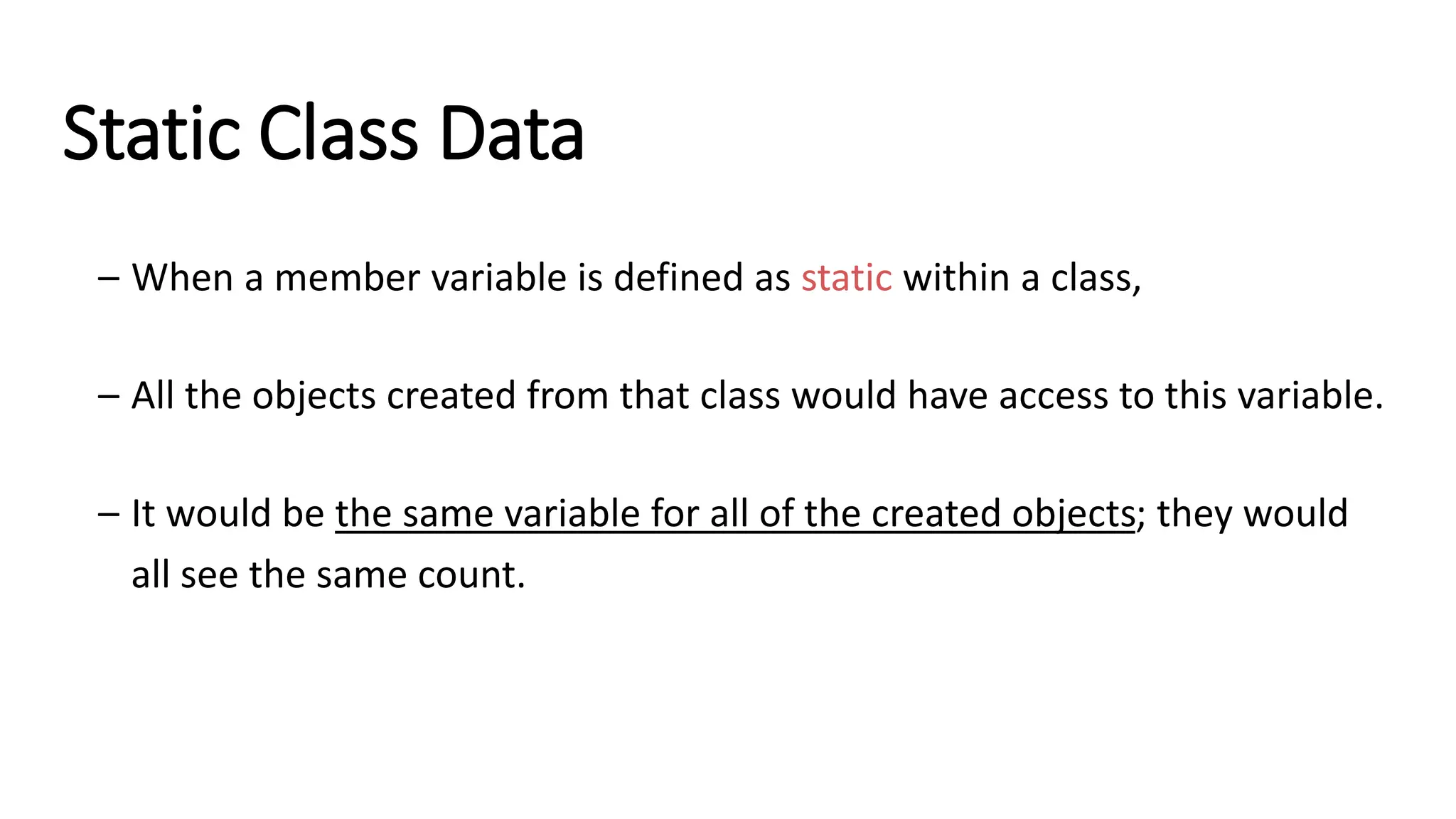
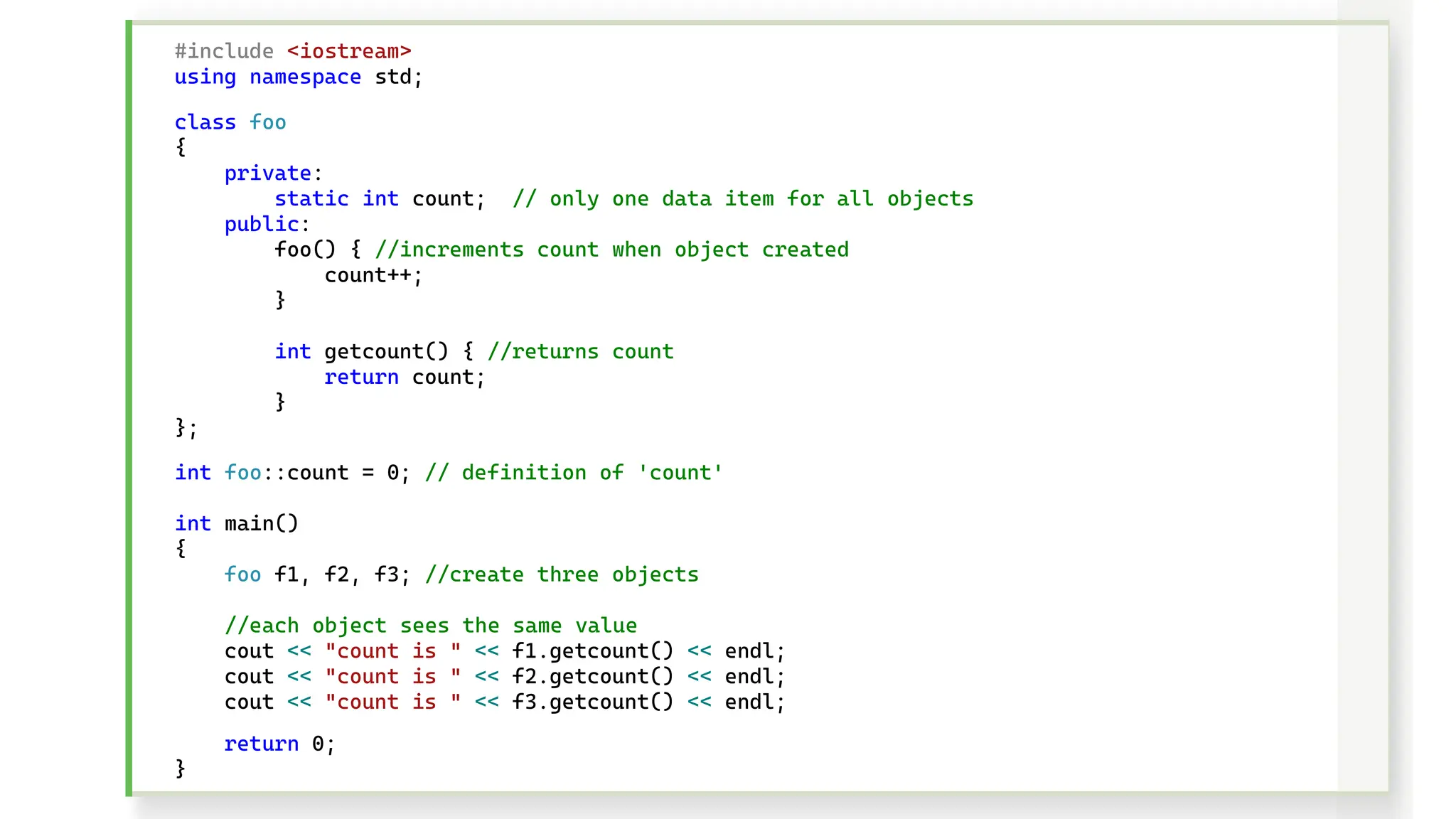
![#include <iostream> #include <cstring> //for strcpy() using namespace std; class part { private: char partname[30]; //name of widget part int partnumber; //ID number of widget part double cost; //cost of part public: void setpart(char pname[], int pn, double c) { strcpy(partname, pname); partnumber = pn; cost = c; } void showpart() //display data { cout << "nName = " << partname; cout << ", number = " << partnumber; cout << ", cost = $" << cost; } }; int main() { part part1, part2; part1.setpart("handle bolt", 4473, 217.55); //set parts part2.setpart("start lever", 9924, 419.25); cout << "nFirst part : "; //show parts part1.showpart(); cout << "nSecond part : "; part2.showpart(); return 0; } Complete Example](https://image.slidesharecdn.com/oopusingclanguage-lecture1-240918193533-6e03ba0e/75/Object-Oriented-Programming-OOP-using-C-Lecture-1-43-2048.jpg)
